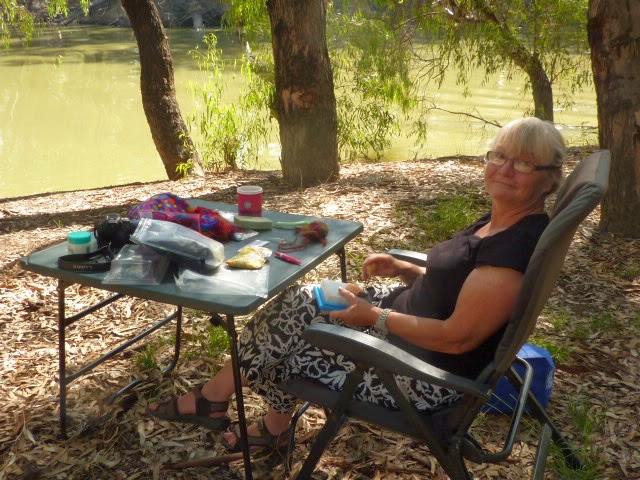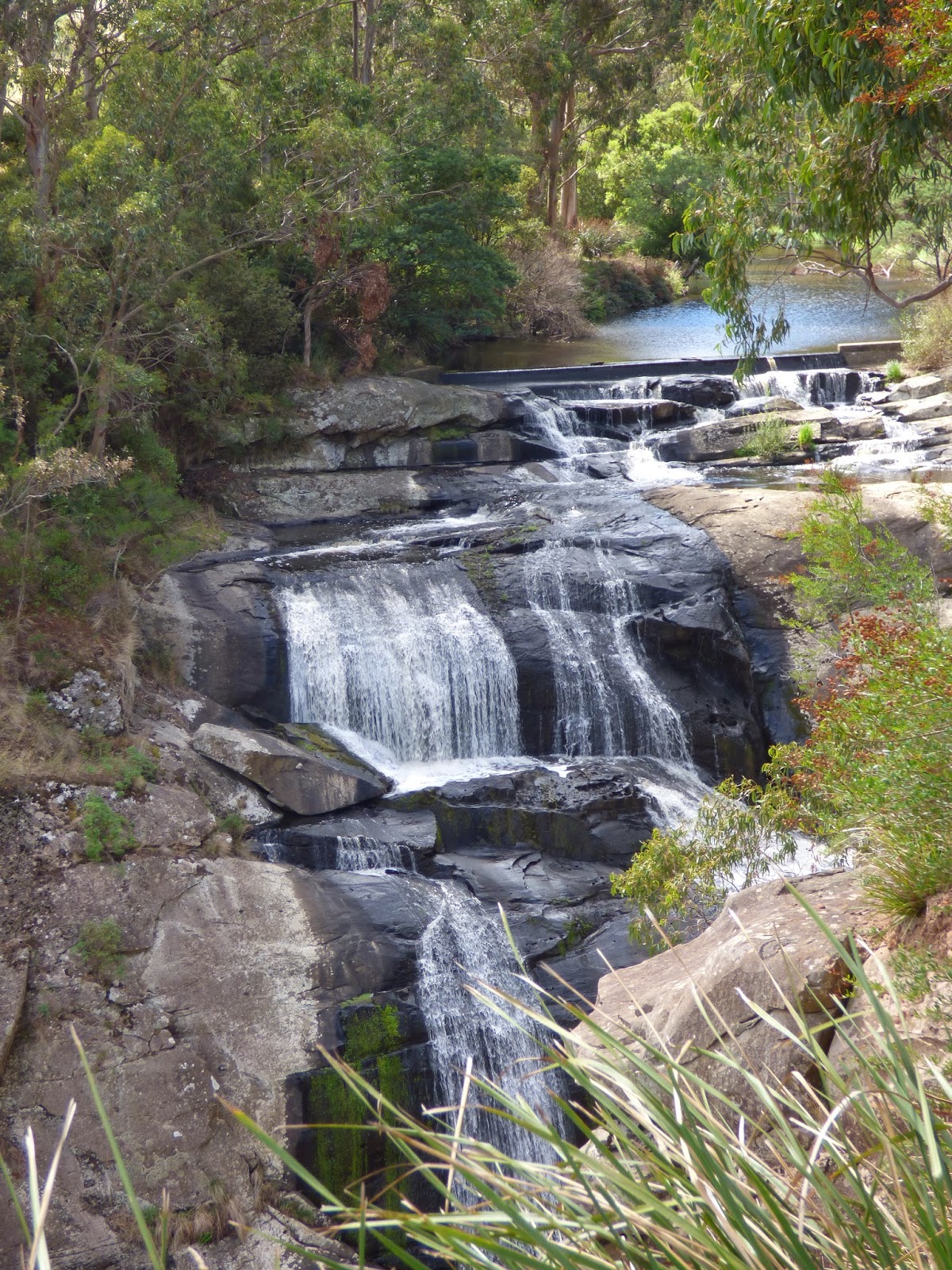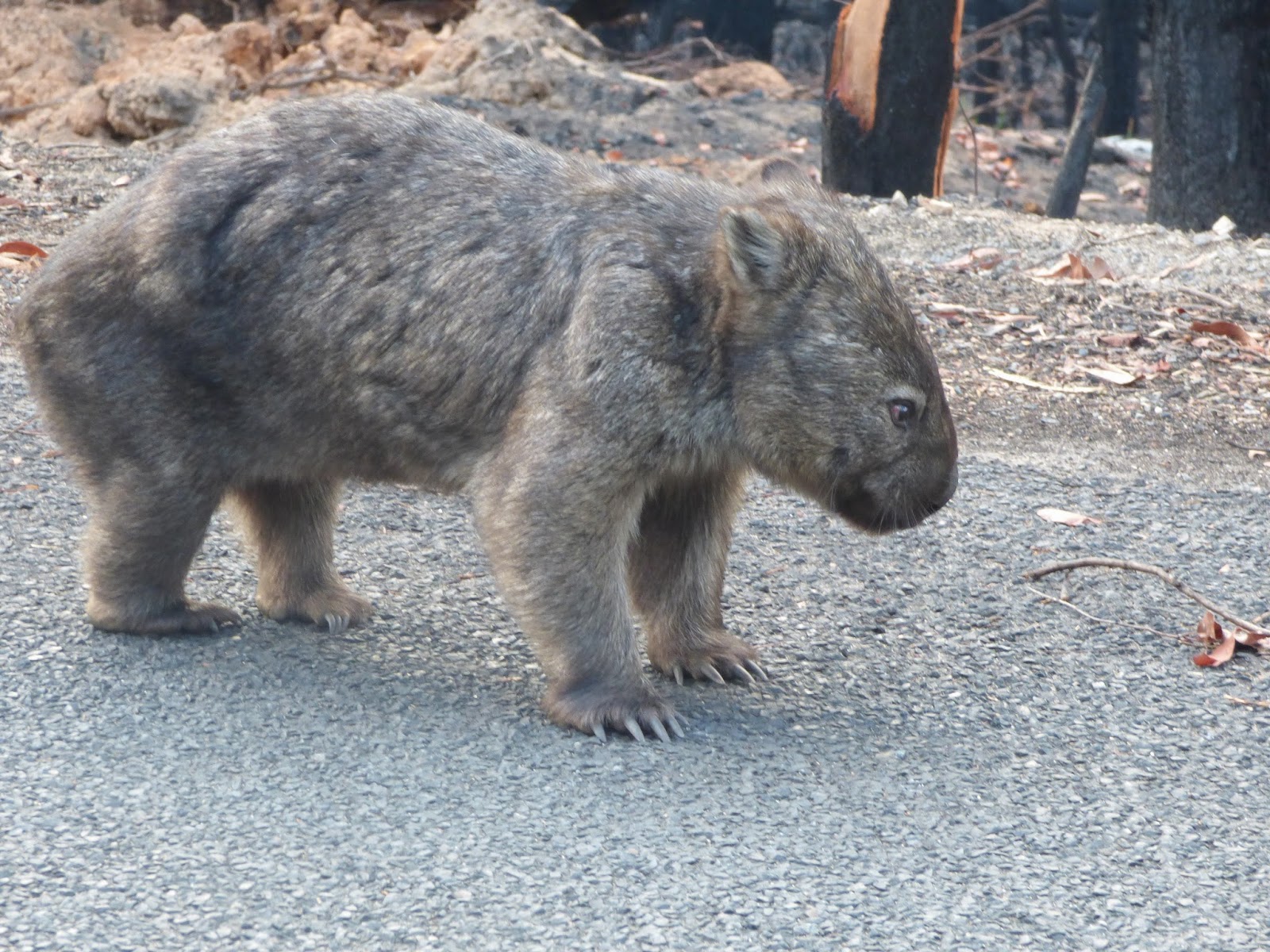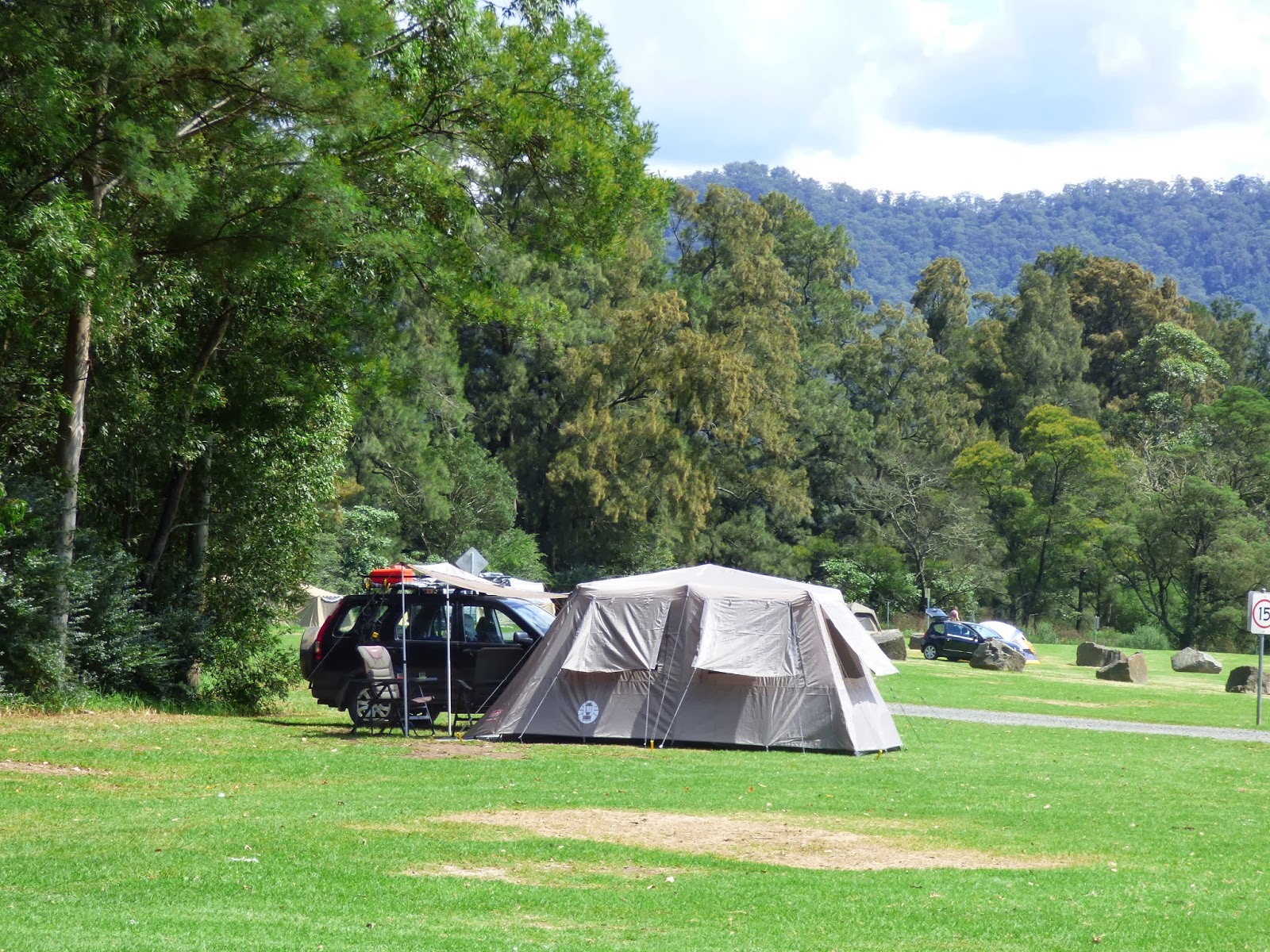Before leaving Maldon we visited the
local lookout tower. Like many small towns in the area, when the gold
started to run out the town started to go downhill. In an attempt to
prevent this happening to Maldon the local council hit upon a plan –
to build a lookout tower at the top of the town's hill. With it's
magnificent 360 degree views it was bound to attract tourists and
daytrippers from miles around. Surprisingly it seems to have worked
and the views are spectacular. The tower now has the dual function of
tourist attraction and fire lookout – the latter for approximately
125 days a year.
And then on to Bendigo – naturally
taking the most convoluted route available.
Bendigo proved to be a large town with
a population of about 100,000 – very well set out and with
impressive architecture including a cathedral which, at one time, was
the largest in the Southern Hemisphere. We decided to do the real
tourist stuff and went for a trip on the talking tram – a hop-on
hop-off journey through the city by old fashioned tram. At the
halfway point we de-trammed to visit the Joss Temple at which, during
the heyday of gold the Chinese population of Bendigo which numbered
many thousands, worshipped. Saved from demolition on numerous
occasions it is now the oldest temple of its type outside China.
Despite being little more than three small brick and corrugated iron
shacks it is still used as a temple for the Chinese today –
although numbers have dwindled somewhat.
Back onto the tram and our next stop
was the Chinese Museum near the centre of the city which gave a
fascinating view of the history of the Chinese during the gold rush.
So fascinating that, despited being reminded several times, Sandra's
insistence on getting her moneys worth meant that we missed the next
tram and ended up walking back to the tram depot to get the car.
The final, unmissable (for Sandra at
least) stop was the Bendigo Woollen Mill where she had her normal
over whelming urge to buy some wool – I think she's knitting
gloves. Despite its obvious attractions we decided not to stay in
Bendigo – there seemed to be little bush camping available and I
doubt if putting up a tent on the manicured lawns in the city parks
would go down very well – so we pushed on another 80k to Echuca on
the banks of the Murray River.
Unusually for us we headed straight
there – partly because it was getting late and partly because it
had begun to rain. Arriving in any new town in the gloomy and rain is
never very attractive and this was no exception – we needed to find
somewhere quickly. We thought there might be bush camping available
several kilometres out of town on the banks of the river – if only
we could find it. Even with satnav we had difficulty locating a place
but eventually found a promising looking track and set too looking
for a bit of flattish ground. The track got rougher and wetter with
deep ruts caused by the tyres of many 4WD vehicles, eventually
however we found a spot right on the banks of the river and set about
putting up the tent.
Fortunately there was a brief lull in
the rain which allowed us to get set up in the relative dry. Our
previous experiences had shown the value of setting the tent up
properly pegged, guyed and all windows closed to the weather. Just as
well we were properly prepared as we were no sooner in the tent when
the heavens opened and it poured constantly throughout the night –
and I mean constantly. However we were snug and probably a bit smug
inside as we congratulated ourselves on our arrangements. This
smugness lasted until morning when, getting out of the tent and
thinking we had got off pretty lightly, I had a look at the roof rack
on the car to find that I hadn't secured the tarp properly and that
the bags on the roof, including some of our clothes bags, were a wee
bit damp. We had to string up a washing line between trees!
 |
| Murray River near our campsite |
 |
| The Murray at dusk from our campsite |
 |
| A passing "tinnie" with fisherman drinking beer |
Despite being several hundred
kilometres inland, Echuca was once the second most important port in
the State of Victoria as numerous paddle-steamers carried goods and
passengers up the Murray River – Australia's biggest river. Several
paddle-steamers and many house boats still ply their trade there but
only as tourist attractions. We explored the town, Sandra posed out
side the local brothel (unfortunately no longer operational) but we
didn't find time to take a boat trip. After a second night by the
river which, now the rain was off, took on a totally different
appearance and was rather idyllic, we packed up, crossed the river
and spent the day in the very interesting little town of Deniliquin
about 80k over the border into New South Wales. Deliquin was built on
the sheep trade and has a very good visitor centre housed in the old
school which is well worth a visit if you are interested in sheep.
Sandra had wanted to visit Deniliquin as
she had read that it has the largest rice processing factory in the
Southern Hemisphere – as good a reason as any I suppose! And it
does. The countryside around is very dry and the traditional image of
rice paddies cascading down hillsides does not apply – vast
irrigation schemes allow local growers to plant great prairies of
rice for processing at the local plant.
 |
| Largest rice processing plant in the southern hemisphere - worth the trip to Australia just to see it ! |
 |
| Vast irrigation schemes allow mass production of rice |
Deniliquin has other claims to fame and
apparently has two entries in the Guinness Book of Records.
Firstly it annually hosts the biggest
Ute Muster in the world and, even more impressively, it has the
record for the greatest number of people gathered together wearing a
Blue Singlet. Not a town to be treated lightly!
Finally, back into Victoria to spend
the night again beside the Might Murray, but this time 80k or so down
stream near a place called Koondrook. The site we found is once again
idyllic and I am sitting here typing in between watching the river
drift past and counting fish jumping and the occasional man in a boat
fishing. Sandra is sitting doing felting which seems to be something
one does with wool and pointed needles which, judging by the
occasional yelp, are inserted into the flesh on a fairly regular
basis.
 |
| Sandra crafting by the river and jabbing herself with felting needles |
[NB I've been having problems putting
photos into the blog – these have, I hope, been resolved and normal
photographs will re-appear shortly, possibly even in this post if I
can find an internet connection]







































